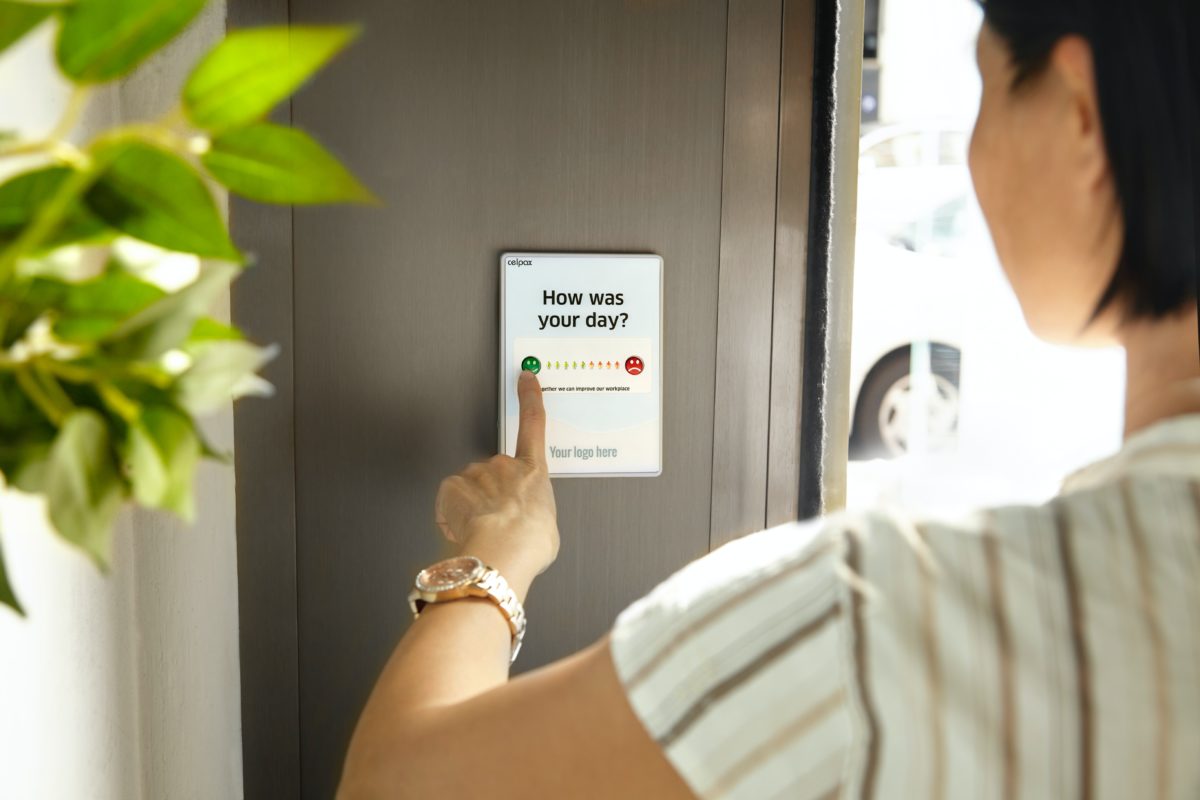The economy is booming and unemployment rates are dropping—so how do you make sure your company is attracting the best talent? The answer is pretty straightforward—ask questions in the form of a recruitment satisfaction survey.
If your candidate experience is lacking then it won’t be long before your recruitment funnel is looking decidedly empty. And the only way to know if there are aspects of your recruitment process that need to be improved is to ask your candidates their opinion.
This needs to be more than an informal chat, so collecting important metrics in the form of a recruitment satisfaction survey is the goal.
Implementing this strategy takes a little time and effort, of course, but the results are well worth it. Candidates almost always have something to say about a company’s recruitment process—and if you’re not offering those candidates the chance to share their thoughts then you’re missing out on some powerful insights.
Anonymous post-interview survey questions are also a vital way to collect information to inform your Diversity, Equity & Inclusion (DE&I) hiring goals and reduce bias in your overall hiring process.
In this post, we’ll explain why recruitment satisfaction surveys are so important for optimizing your candidate experience and share tips on how to implement them. With these insights, you’ll be able to identify aspects of your recruitment process that might be lacking—transforming your hiring process as a result.
What are recruitment satisfaction surveys?
A recruitment satisfaction survey can give you valuable information about your hiring process—from the other side of the desk. Most surveys use a combination of closed and open-ended questions to gain insights into the opinions of your interview candidates.
These can be a paper-based survey—although, with the increase in remote interviews and working from home, they’re more likely to be completed through an online survey platform. Using powerful business survey software is an efficient way to interpret your survey results.
Recruitment satisfaction surveys can be thought of like a reverse interview scorecard—where the candidates are scoring your abilities, instead of the other way around. They can be used at any point throughout your recruitment funnel—and the data gained from candidates who didn’t go on to be hired can be particularly valuable.
It’s a good idea to integrate surveys at specific points throughout the candidate journey so you’re able to form an accurate analysis of how each stage is perceived. In addition to using hiring surveys to collect the opinions of new employees, make sure to survey rejected candidates using a range of post-interview survey questions. It’s also a good idea to survey people who choose to leave the application process partway through.
Mapping out the candidate journey and then developing a survey template for each stage will help you identify gaps at each point—from your marketing efforts to general brand awareness, details of the job, and more.
These candidate satisfaction surveys should be anonymous, allowing your candidates to remain open and honest about their experience. This guarantee of anonymity can help candidates feel safe and secure enough to relay any negative feedback as well as positive. Anonymous surveys also allow you to collect data that can help inform your DE&I strategy.
Why are recruitment satisfaction surveys important?
The data gathered from recruitment satisfaction surveys offer a huge amount of valuable information. Once analyzed, this can be used to offer actionable insights to improve your future recruitment performance, particularly in the three areas we’ve covered below.
Improve the candidate experience
Remember that job searching is stressful for job seekers, so hiring managers should always be mindful to try and create a positive experience for candidates. The trends shown by your candidate experience surveys can help you identify any friction or pain points along the candidate journey, and then work to reduce them.
If the online application form on your website is so complicated and lengthy that many early applicants simply give up, for example, that’s something that needs to be changed. If your time to hire is so long that respondents accept a job offer from another company in the meantime, that’s vital information for your hiring manager. Perhaps you haven’t offered a clear timeline of the hiring process, so candidates don’t know what to expect when.
Combining these results with other recruiting metrics like candidate net promoter score (NPS) is a great way to identify aspects of your hiring process that need to be adjusted and improved. If your NPS is low, it’s essential to identify what’s going wrong and where, so your recruiters can fix it.
Reach your DE&I hiring goals
In addition to the social importance of ensuring a diverse workforce, setting and reaching DE&I goals can also have a positive economic impact. Companies with a higher ethnic and gender diversity tend to demonstrate higher than average profitability than their counterparts.
Adverse impact can negatively affect the diversity of your workforce—and you may not even consciously realize this is happening within your hiring processes. If you’re finding responses to your recruitment surveys indicate that your hiring process isn’t consistent or that certain applicants feel they are being treated unfairly—either at specific stages or across their journey as a whole—this gives you a strong starting point for improvement.
Responses from minority candidates can be particularly valuable when it comes to evaluating your DE&I goals and working to reduce any adverse impact you’ve identified. Can you see any patterns emerging in responses that indicate something needs to change?
If certain groups are dropping out of your recruitment funnel at a specific stage of their journey, include questions in a recruitment survey sent out at this stage to try and find out why. Often, adverse impact can be a source of unconscious bias, which is another factor in your recruitment funnel that surveys can help identify and improve.
If you’ve set specific DE&I goals when it comes to interviewing and hiring, results from your surveys can also help you ensure that you stay on track.
Reduce bias in your hiring process
Despite our best intentions, implicit or unconscious bias can impact hiring decisions—and that needs to stop.
With 93 percent of companies now recognizing the need to reduce bias in their talent acquisition process, the tides are thankfully starting to change.
Working on developing more inclusive job descriptions is a great first step, but you need to know if these are being well received by your candidates. And the only way to find out is—you guessed it—ask them what they think. Descriptive words like “dominate” or “rock star” can discourage applicants from minority groups. Aiming for gender-neutral, jargon-free language that accurately describes each role is far more inclusive.
Offering an anonymous recruitment satisfaction survey can also help highlight any incidences of unconscious bias within your hiring process. Make sure that every response to open-ended questions is read by a human being. The only way to address unconscious bias in the hiring process is to first bring awareness to it.
You may find some comments challenging your perceptions of how inclusive your recruitment process is. This is a golden opportunity to adjust and improve your candidate experience—while also reducing bias and promoting equality.
If you consistently find candidates commenting negatively about your interview process, there may be unconscious bias at play here too. Don’t assume that your hiring managers automatically know how to conduct a fair and equitable interview—they may be allowing their unconscious bias to form part of their decision-making process.
Interviews that veer off track can end up favoring candidates with similar interests to those of the interviewer—the “gut feeling” is that a candidate may succeed at the company because they’re like the interviewer. These implicit biases can have a negative effect on hiring decisions.
If your feedback process after interviews brings up issues around your hiring decisions, implement interview training for your hiring managers. Using AI-powered video interviewing technology can also help standardize your interview processes and reduce unconscious bias. Allowing all candidates to be compared equally is the best way to find the top candidate for each job opening.
Common recruitment satisfaction survey questions
By now, you should be convinced of the reasons you need to start implementing recruitment surveying within your organization. But what kind of questions should you be asking?
Combining a blend of closed and open-ended questions is our recommendation.
Closed-ended questions are important because they allow candidates to provide quick answers for some key metrics. These responses can be converted into numerical data and then analyzed. These types of questions allow you to collect reliable and consistent data which can then be used to inform and improve your recruiting process.
Offering some open-ended questions can give job applicants and new hires the freedom to expand on specific points. Sometimes the answers to open-ended questions may surprise you—and that’s why they’re so valuable. These questions can be angled towards whatever metrics you’ve identified as priorities for your company—whether that’s meeting DE&I goals, improving your communications, considering if your company culture comes across as inclusive, and more.
Keeping these surveys relatively short is the goal—if candidates feel overwhelmed by the number of questions they may decide to skip the survey. Aim for 6-12 questions, with closed-ended questions making up the majority.
Use the following examples of candidate experience survey questions to get you started.
Close-ended questions
On a scale of 1-10…
- …how easy was it to apply for the position?
- …how knowledgeable was your interviewer?
- …how fair and equitable did you find the application process?
- …how would you rate your interview process?
- …how clearly did your interviewer explain the details of the job?
- …how responsive was your point of contact (POC) during the interview process?
- …how likely are you to recommend us to a friend or colleague?
Open-ended questions
- In a few words, what could we do to improve our recruiting process?
- What improvements could we make to improve our diversity, equity, and inclusion efforts?
Creating more equitable interviews at your organization
Using the survey results from your candidate satisfaction questionnaire can be the difference between a clunky and hard-to-navigate system that favors certain candidates—and a seamless recruitment process that’s both fair and equitable.
This is an important process and while it does take time and effort to implement—the benefits to your company can’t be overstated. If you’re not sure where to start—make things easier with the help of technology. Use robust email survey software to collect your data, combined with the use of a video interview solution like Clovers to guarantee unbiased and objective interviews.
Having an open mind when it comes to the answers to your surveys is also important. Remember that each piece of negative feedback isn’t an attack on your company culture—but a gift that can help inform and improve your candidate journey. Creating a seamless and equitable recruitment journey helps you find and hire the top candidates for each role.
A diverse workforce is a more productive workforce. Effectively using the data from a tool like recruitment surveys is one of the best ways for your company to cultivate inclusive and equitable practices as you grow your team. And in that kind of scenario—everyone wins.
Ready to take your recruitment processes to the next level?
Recruitment surveys are a powerful way for you to assess your candidate experience. Often, interviews are a prime area for improvement, so schedule a demo or try for free for 30 days to find out how Clovers’ AI-powered video interview solution can help you improve candidate experiences and reduce bias in your hiring processes.

